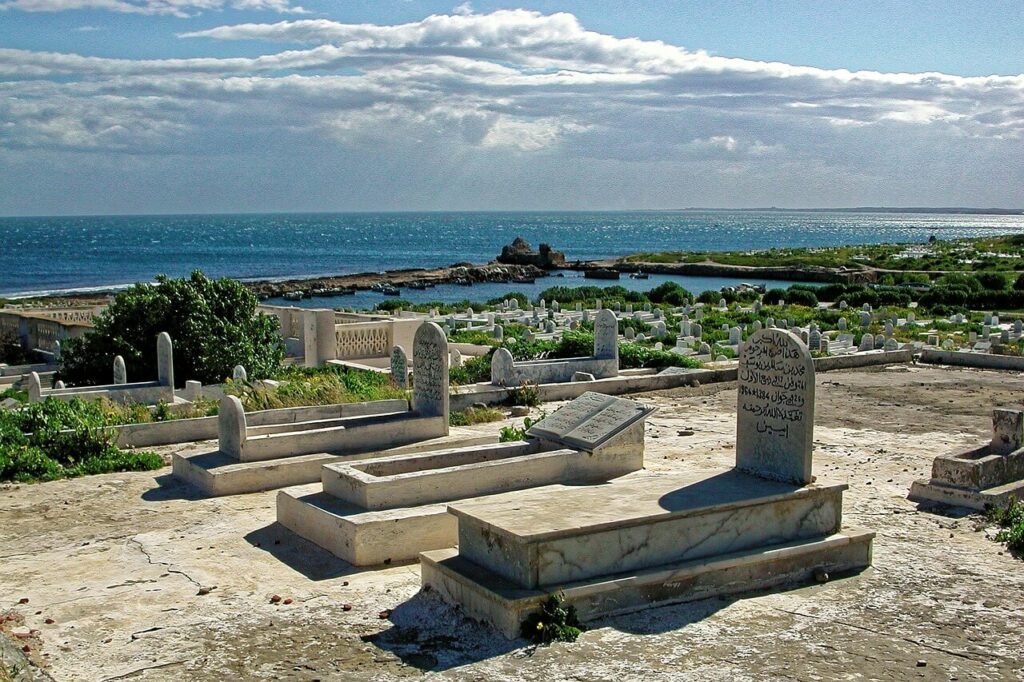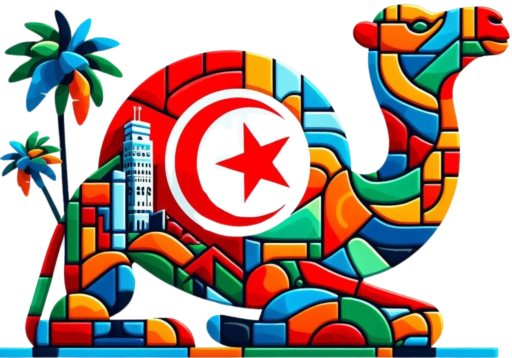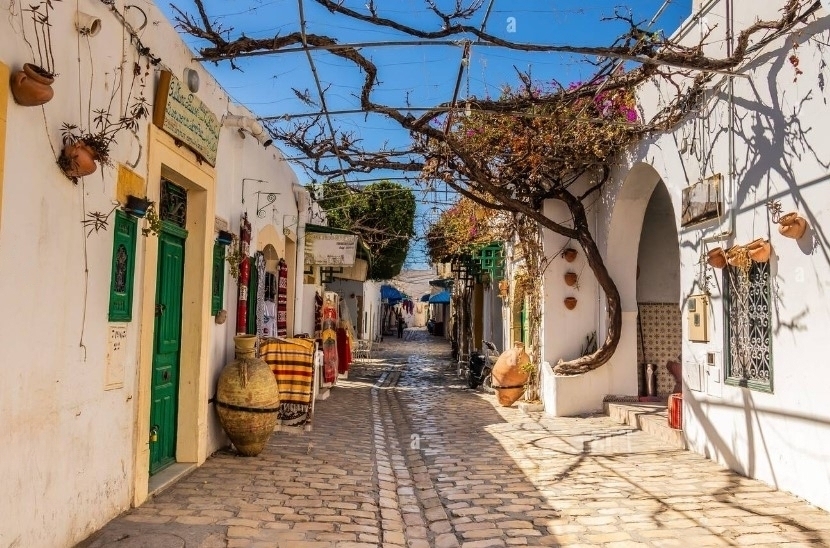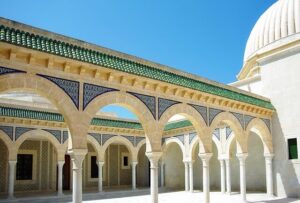Table of Contents
- Introduction
- History of Mahdia
- Main Attractions
- Beaches of Mahdia
- Culture and Traditions
- How to Get to Mahdia
- Conclusion
Introduction
Mahdia, located on Tunisia’s eastern coast, is a city that combines history, culture, and natural beauty. Known for its enchanting beaches and crystal-clear Mediterranean waters, Mahdia is an ideal destination for those looking to explore an authentic and charming Tunisia.
Founded during the Fatimid era, Mahdia preserves traces of its glorious past, blending them with a welcoming and modern atmosphere. With its traditions and turquoise sea, this city offers a memorable experience for travelers of all kinds.
In this guide, we’ll discover what makes Mahdia unique, from its ancient history and main attractions to its idyllic beaches and local culture.
History of Mahdia
Origins and the Fatimid Era
Mahdia was founded in 921 AD by the Fatimids, an Islamic dynasty that chose it as the capital of their North African caliphate. Situated on a rocky peninsula, the city was protected on three sides by the sea, making it strategically defensible. During the Fatimid era, Mahdia became an important cultural, political, and economic center.
Remnants of this historic period are still visible in the city’s architectural remains and ancient gates, like the famous Skifa el Kahla. The city’s location on the Mediterranean contributed to its central role in the region’s trade routes.
The Fatimids left an indelible mark on Mahdia, later enriched by the succeeding dynasties that controlled the city.
Mahdia Through the Centuries
After the decline of the Fatimids, Mahdia fell under the control of various dynasties, including the Normans and the Hafsids. Throughout each era, the city underwent various transformations while maintaining its unique charm. The successive invasions and raids created a cultural heritage of great historical value.
Over the centuries, Mahdia also became a significant commercial port, attracting merchants from across the Mediterranean and becoming a crossroads of diverse cultures. This rich history is still evident today in the city’s walls and remains of ancient fortifications.
Every corner of Mahdia tells a different story of conquests, traditions, and culture, making it a fascinating place for history enthusiasts.
Modern Mahdia
In the 19th and 20th centuries, Mahdia developed a strong textile industry, becoming famous for its fine silk and cotton fabrics, which remain a key pillar of the local economy. Meanwhile, the port of Mahdia evolved into one of Tunisia’s main fishing centers.
Today, Mahdia is a vibrant and growing city where artisanal traditions coexist with a modern cultural scene. Its beaches and crystal-clear waters attract tourists from all over the world, while the local community proudly preserves its cultural and historical heritage.
Visitors to Mahdia can immerse themselves in an authentic, welcoming atmosphere, enjoying the unique blend of ancient and modern that characterizes this Tunisian city.
Main Attractions
The Medina of Mahdia
The Medina of Mahdia is a charming maze of narrow streets and whitewashed houses that date back to the Ottoman period. The entrance to the medina is marked by the Skifa el Kahla, a historic fortified gate that was once the city’s only entrance.
Inside the medina, visitors can explore traditional markets where they can purchase handicrafts and experience the daily life of Mahdia. Historic cafés in the medina offer a relaxed atmosphere, perfect for a refreshing break during the visit.
Exploring the medina is an experience that transports visitors back in time, providing an authentic glimpse into the history and culture of Mahdia.
The Port and Traditional Boats
The port of Mahdia is one of the oldest in Tunisia and remains an active fishing port. Here, visitors can see the feluccas, traditional Tunisian fishing boats, moored along the docks.
Besides its practical role, the port is also a gathering place for the local community, with numerous seafood restaurants offering fresh, delicious dishes. The lively atmosphere of the port offers an authentic look at the city’s daily life.
A visit to the port allows travelers to discover Mahdia’s fishing traditions and enjoy local specialties in a unique setting.
Fort Borj el Kebir
Fort Borj el Kebir, built in the 16th century, is one of Mahdia’s main attractions. This massive fortress offers a panoramic view of the city and the sea and stands as a symbol of Mahdia’s military history.
Inside the fort, visitors can explore exhibits that detail the region’s history and its defenders, providing an in-depth perspective on the local history. The fort is also a perfect spot for spectacular photos of the Tunisian coast.
A tour of Fort Borj el Kebir is a journey through centuries of history, ideal for anyone wanting to delve into Mahdia’s past.
Beaches of Mahdia
Mahdia is famous for its beaches, some of the most beautiful in Tunisia, characterized by fine sand and turquoise waters. Plage des Mahdia is the main beach, where visitors can relax, swim, and enjoy water sports.
Mahdia’s beaches offer a peaceful, relaxing environment, perfect for families and couples looking to enjoy the sea in a serene atmosphere. Numerous resorts and restaurants line the beach, providing comfort and high-quality services.
For sea lovers, Mahdia is a must-visit destination where the Mediterranean offers unique views and crystal-clear waters.
Conclusion
Mahdia is a complete destination, combining history, culture, and natural beauty, with dreamy beaches and an authentic atmosphere. Whether you’re a history enthusiast, a sea lover, or a culture explorer, Mahdia has something special to offer.
We’ve included a video about the city.
Read more of our articles.
Other town:






